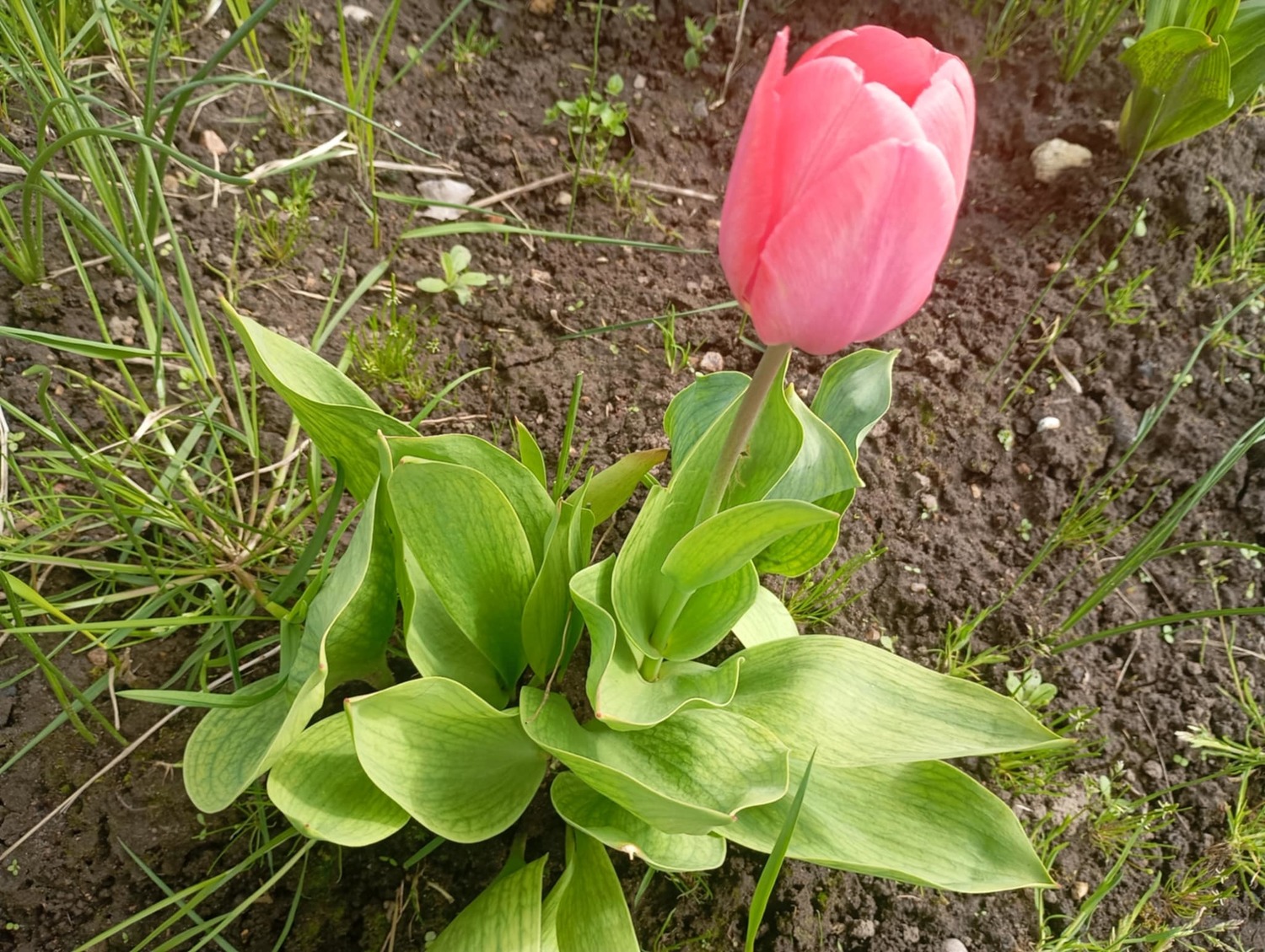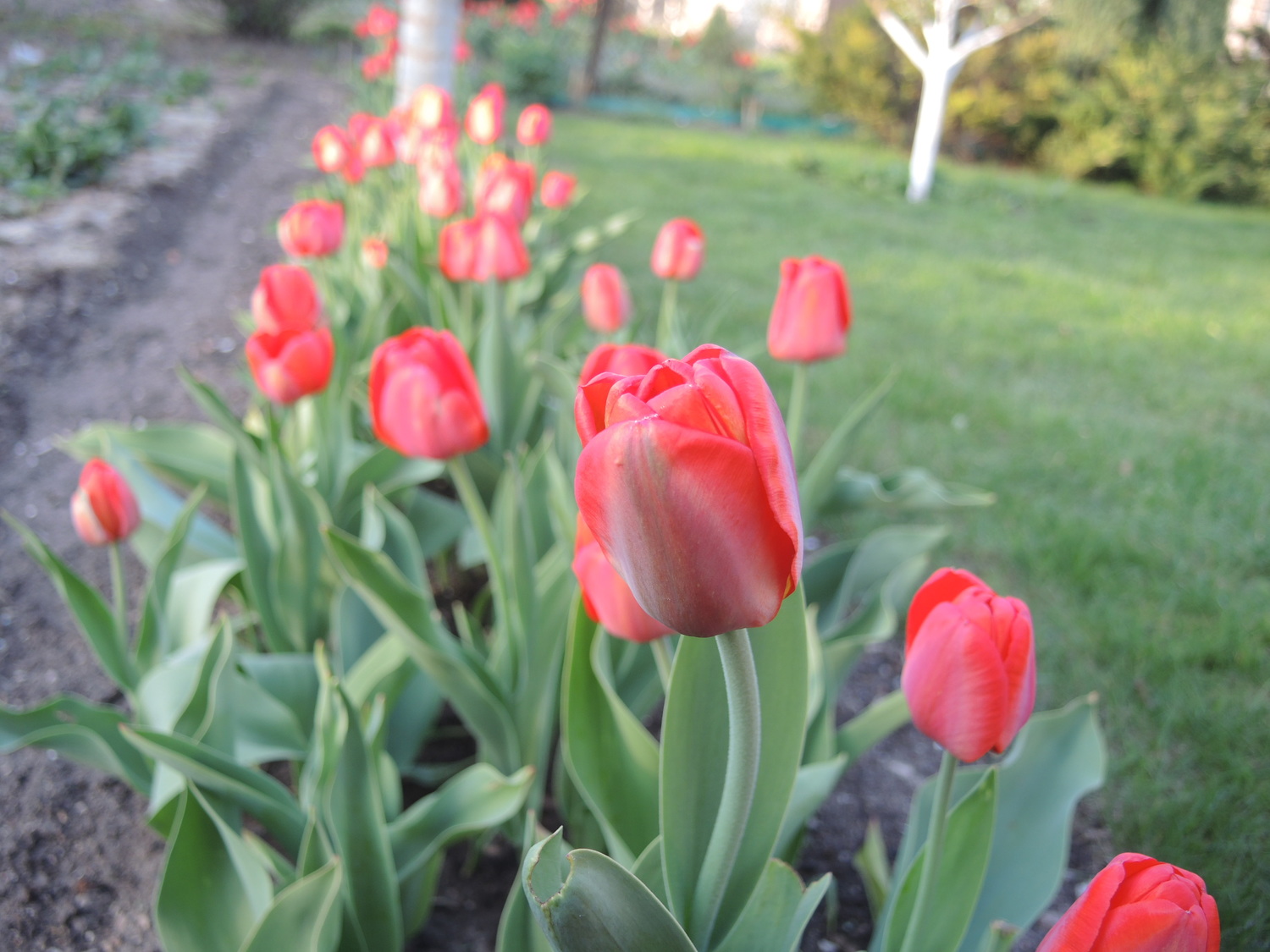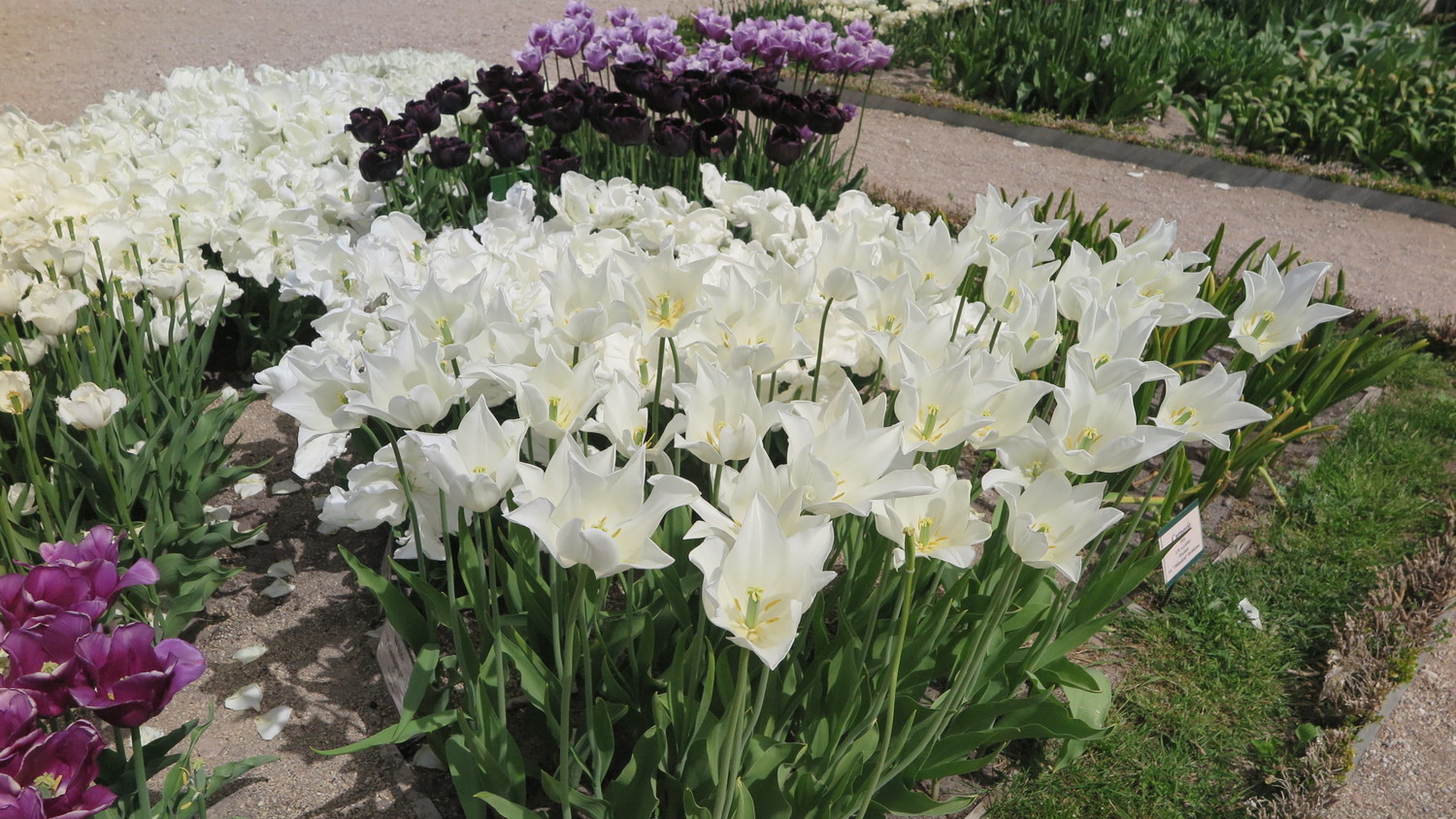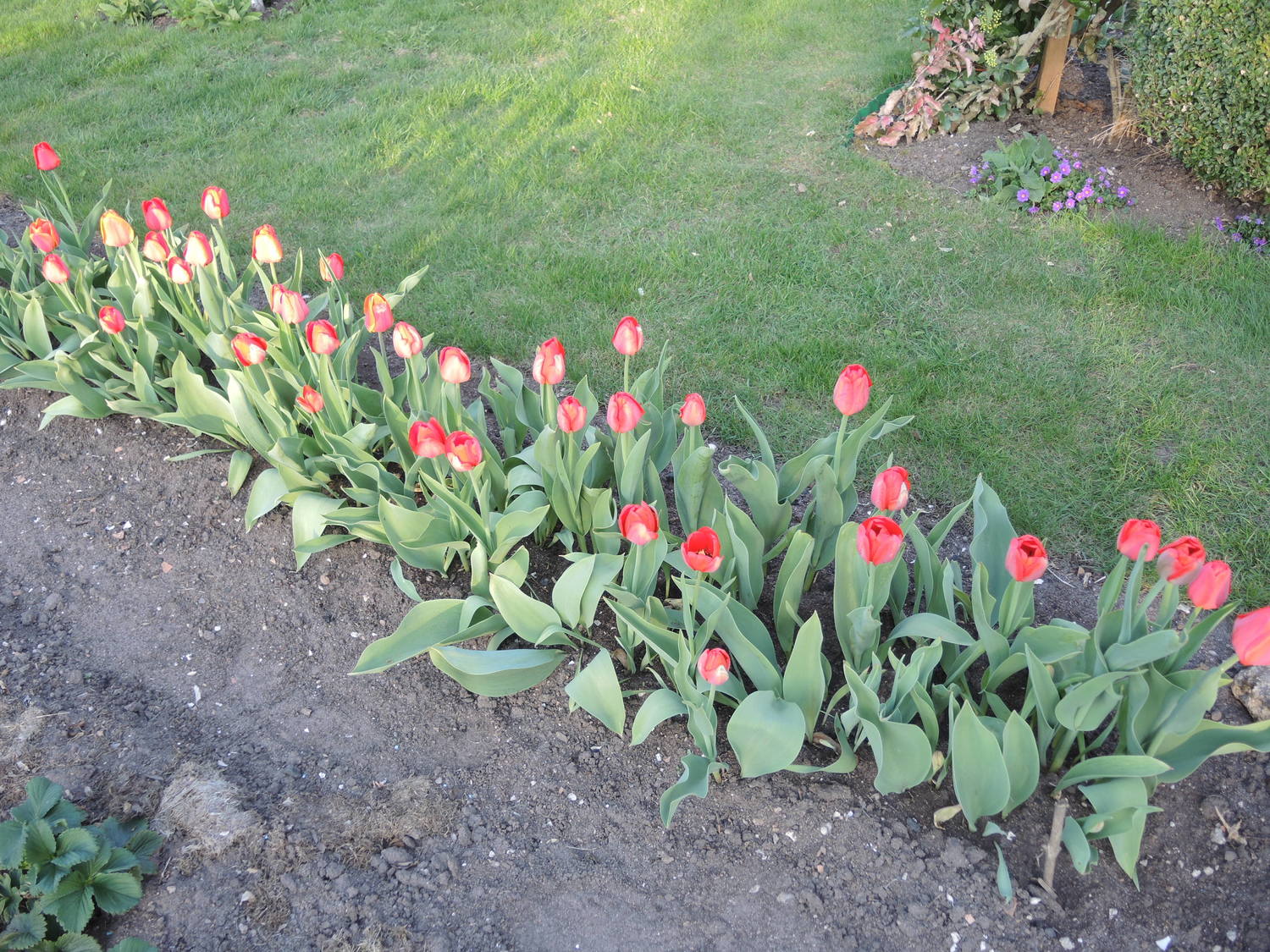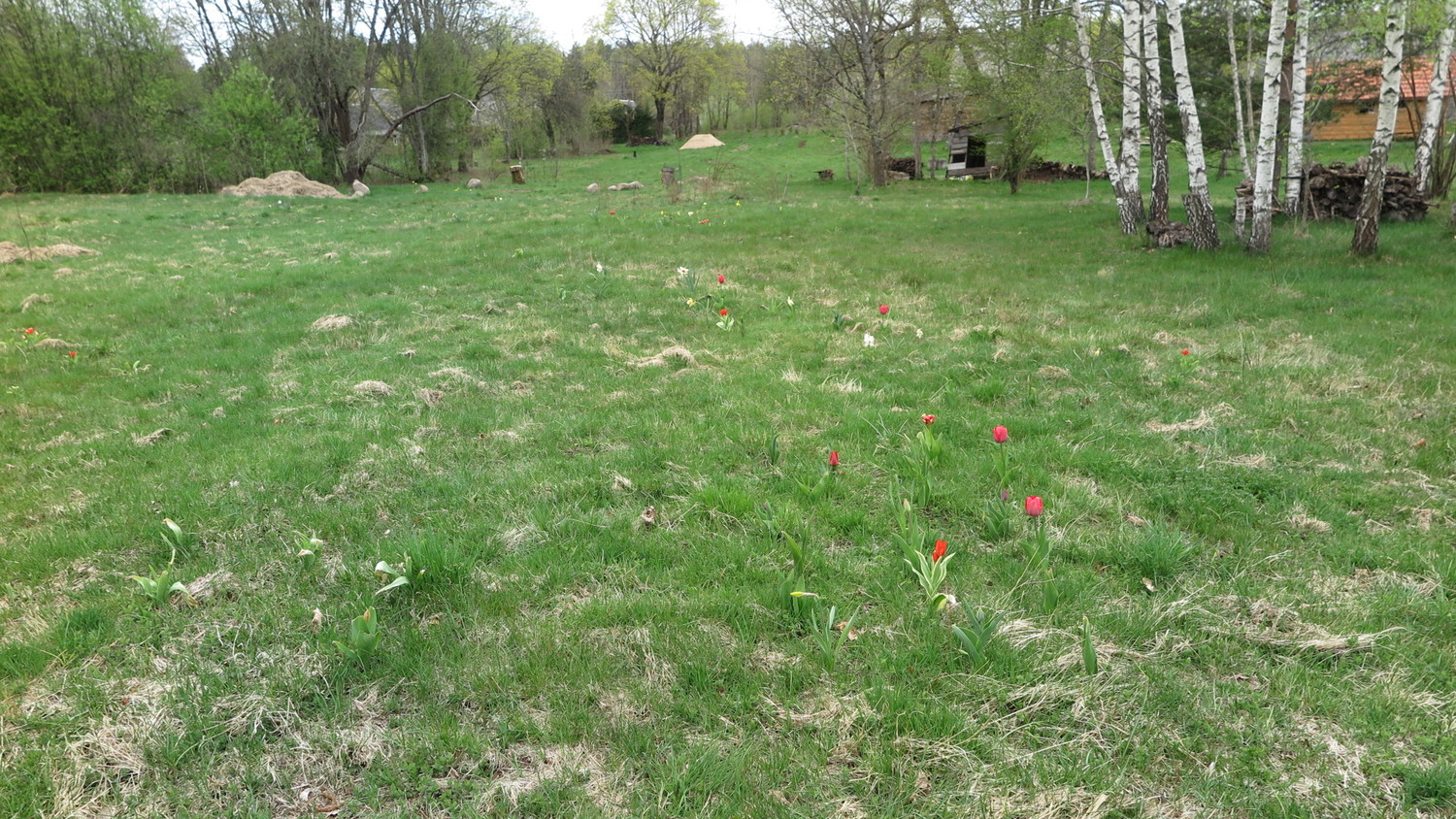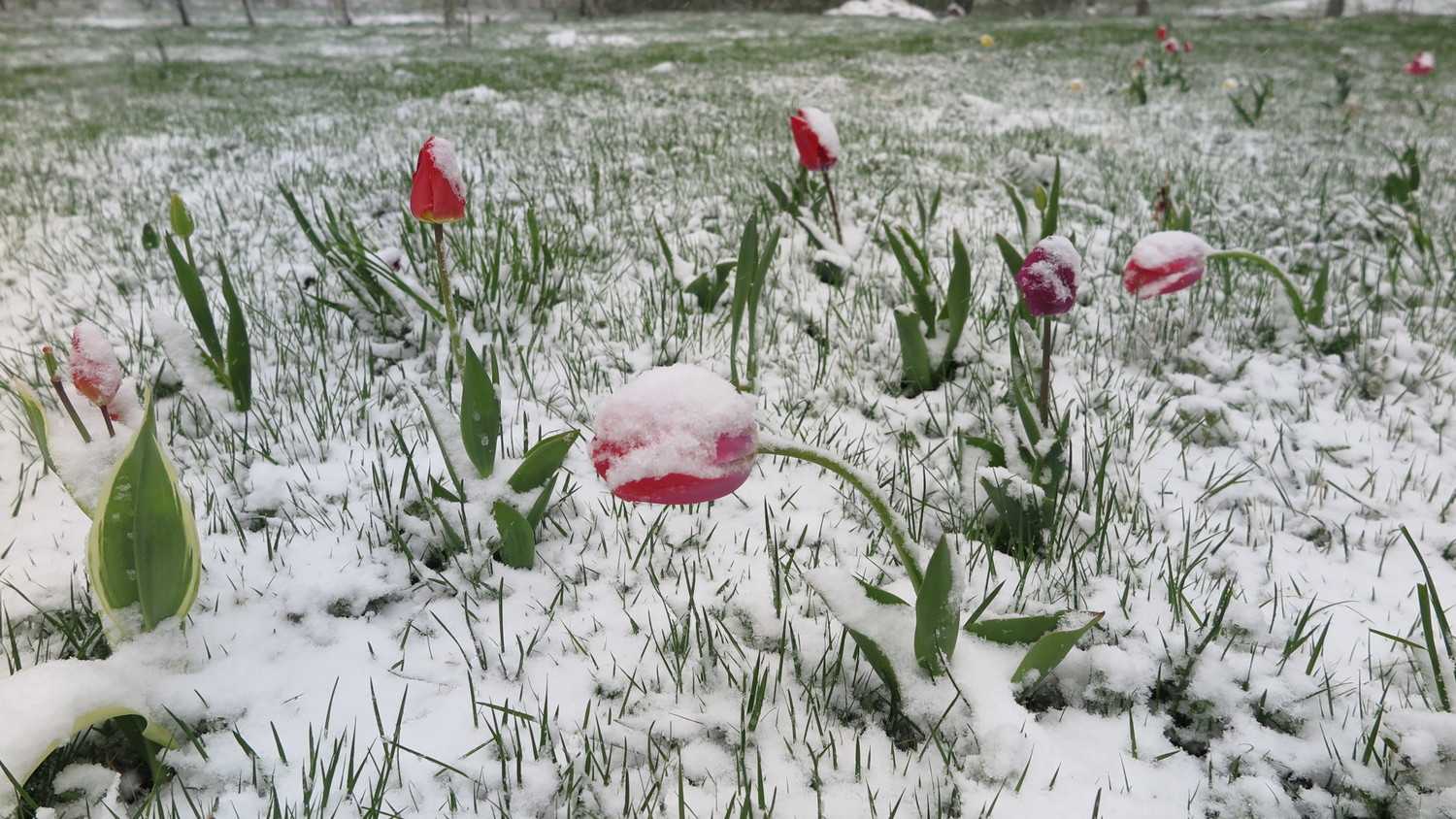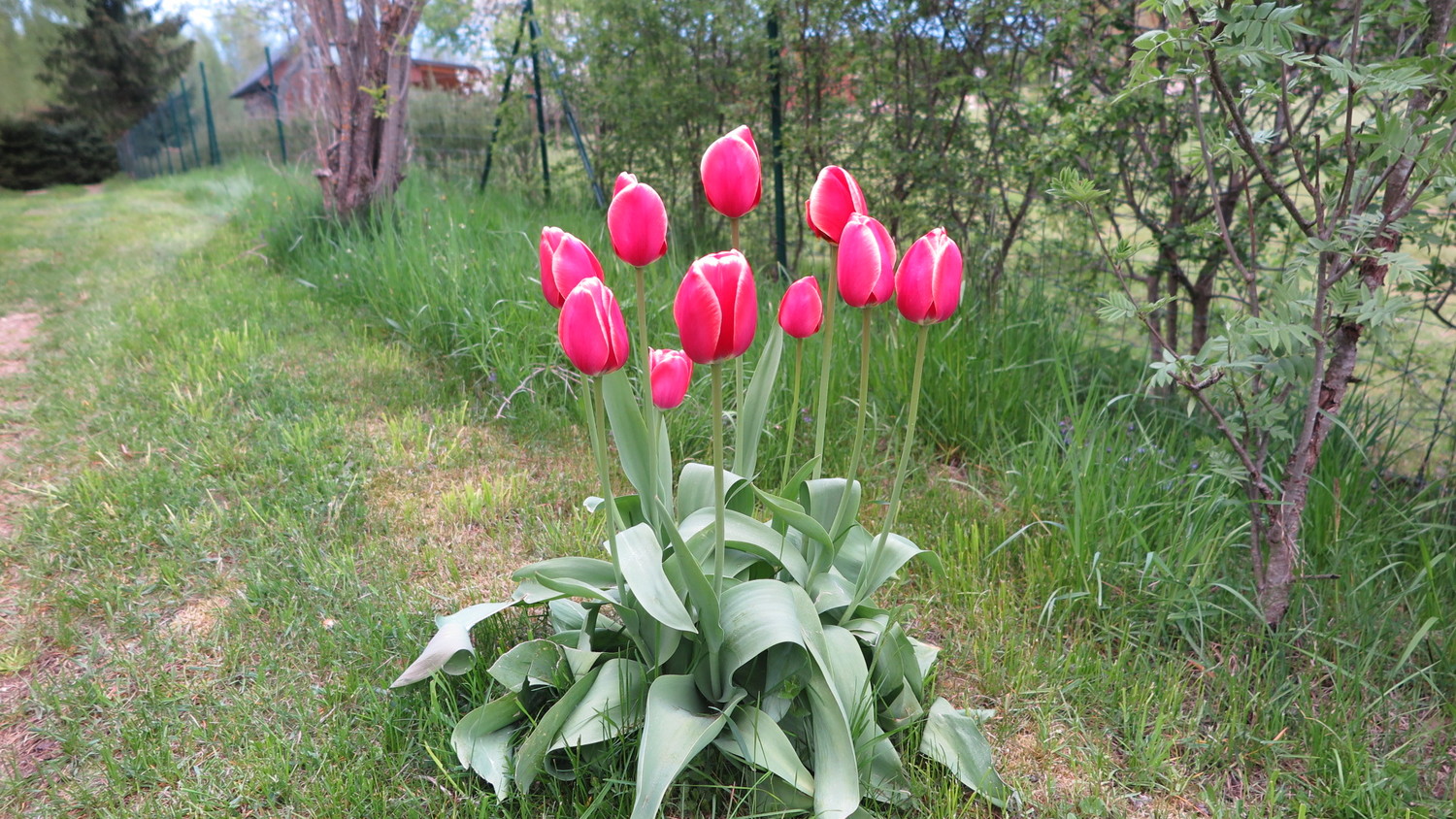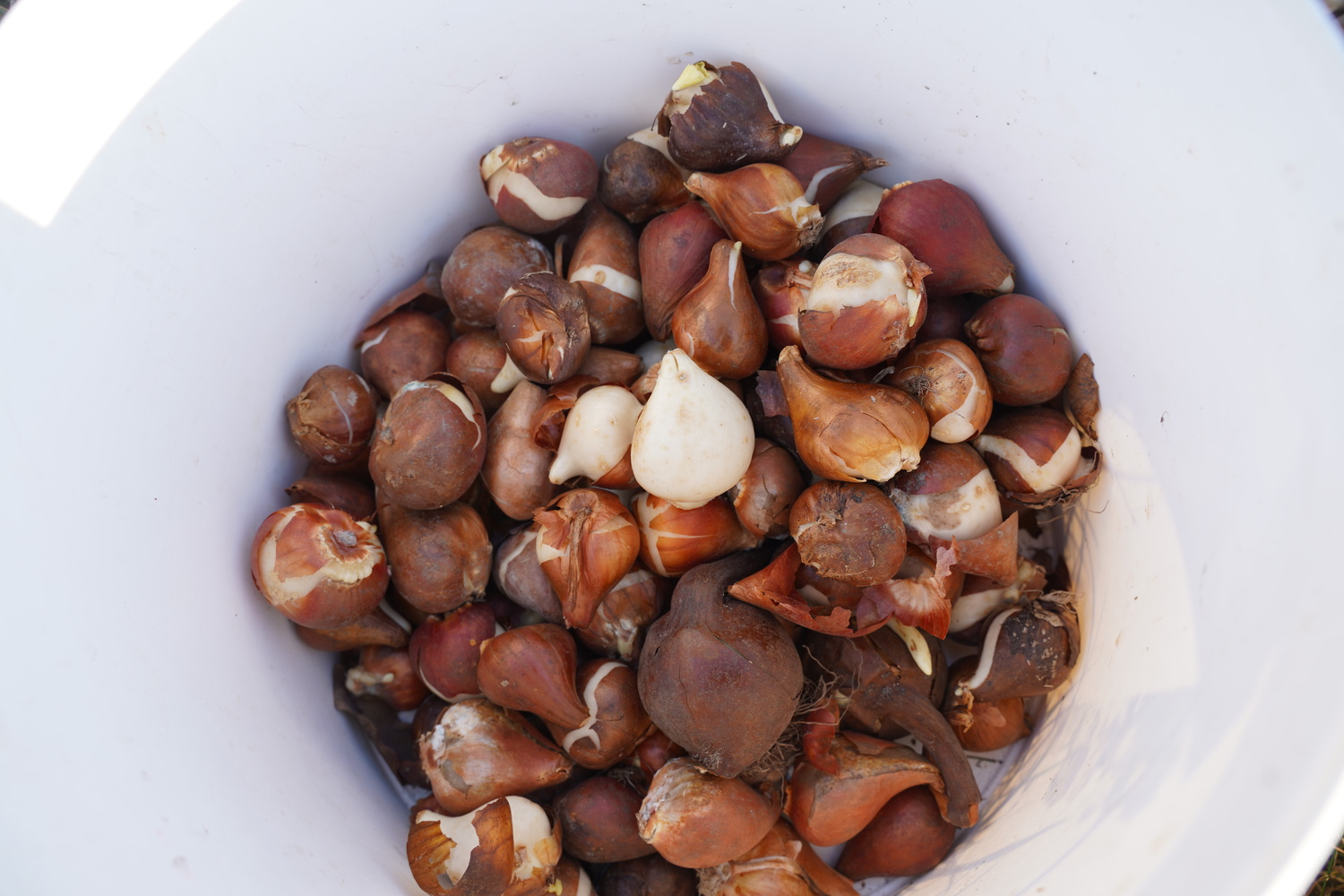Tulips originate from Central Asia. They are among the most popular plants of that region and are surrounded by many legends. Tulip motifs are common in Eastern textiles and architecture. Tulips only appeared in Europe in the late 16th century, where the beautiful flower quickly spread through aristocratic gardens.
Tulips are even connected to the first major speculation scandal, which revealed for the first time how financial bubbles burst. In the Netherlands, around 1634, the tulip-growing business gained rapid popularity, and tulips began selling for astronomical prices. The bulbs of newly developed tulip varieties could sell for sums so high, they were considered unbelievable at the time—a single bulb could be worth a house, jewellery, or livestock.
Prices soared as sellers hoped for double or triple profits by growing more bulbs. Often, bulbs were purchased sight unseen, with only a promise that they would grow. This “tulip mania” spread across Europe. The peak was in 1636, when people took out loans just to buy a single tulip bulb.
In 1637, the Dutch government passed a law banning tulip bulb speculation, causing prices to collapse—hundreds were left bankrupt, and millions impoverished. Even today, tulips remain inseparable from the image of the Netherlands.
Currently, there are about 2,500 tulip varieties officially registered, though it is believed that there are around 10,000 varieties worldwide. According to modern classification, tulips are divided into 15 classes, which are grouped into 4 main categories based on their blooming time: Early-flowering tulips, Mid-season flowering tulips, Late-flowering tulips, Wild tulip species and their derived varieties. By combining different varieties, it is possible to enjoy continuous blooming tulips from the moment the snow melts until summer.
Planting Tulips
Tulips are planted only in autumn. Within 20–30 days, they must strengthen and develop roots, as the quality of the bloom in spring depends on this. The soil temperature should be around 7–9°C (44–48°F). Tulips should not be stored over winter and planted in spring, as their flowers develop under cold conditions. The most suitable soil for tulips is humus-rich loam—it must be fertile and have a neutral ph (6.5–7.5). The topsoil should be at least 30 cm deep, able to absorb moisture well, and loose and breathable. Heavy soil can only be used if it’s amended with plenty of peat, manure, or compost (20 kg per square meter). It has been observed that in heavier but well-prepared soils, tulips tend to produce more vibrant blooms and larger bulbs. Groundwater should not be higher than 60 cm from the surface. If it is higher, tulips should be planted in raised beds about 20–25 cm tall.
Choose a sunny and wind-protected location. There is no need to worry about the shade from trees, as tulips will bloom before the trees leaf out.
Before planting tulip bulbs, you can grow any vegetables or flowers, except for plants from the onion family and the nightshade family (Solanaceae)—such as potatoes and tomatoes—as nematode and viral diseases from these crops can be transmitted to tulips.
On average, tulip bulbs are planted at a depth of 10–12 cm. For long-term planting, the depth can be up to 25 cm, though deeper planting reduces the bulb’s ability to multiply. The classic rule of thumb: plant at a depth of three times the bulb's height in light soil, and two times in heavier soil. Large bulbs should be planted 8–10 cm apart, with 20–25 cm between rows. It is believed that the optimal yield is about 50 large and 80–100 small bulbs per square meter.
A tulip meadow in bloom in spring
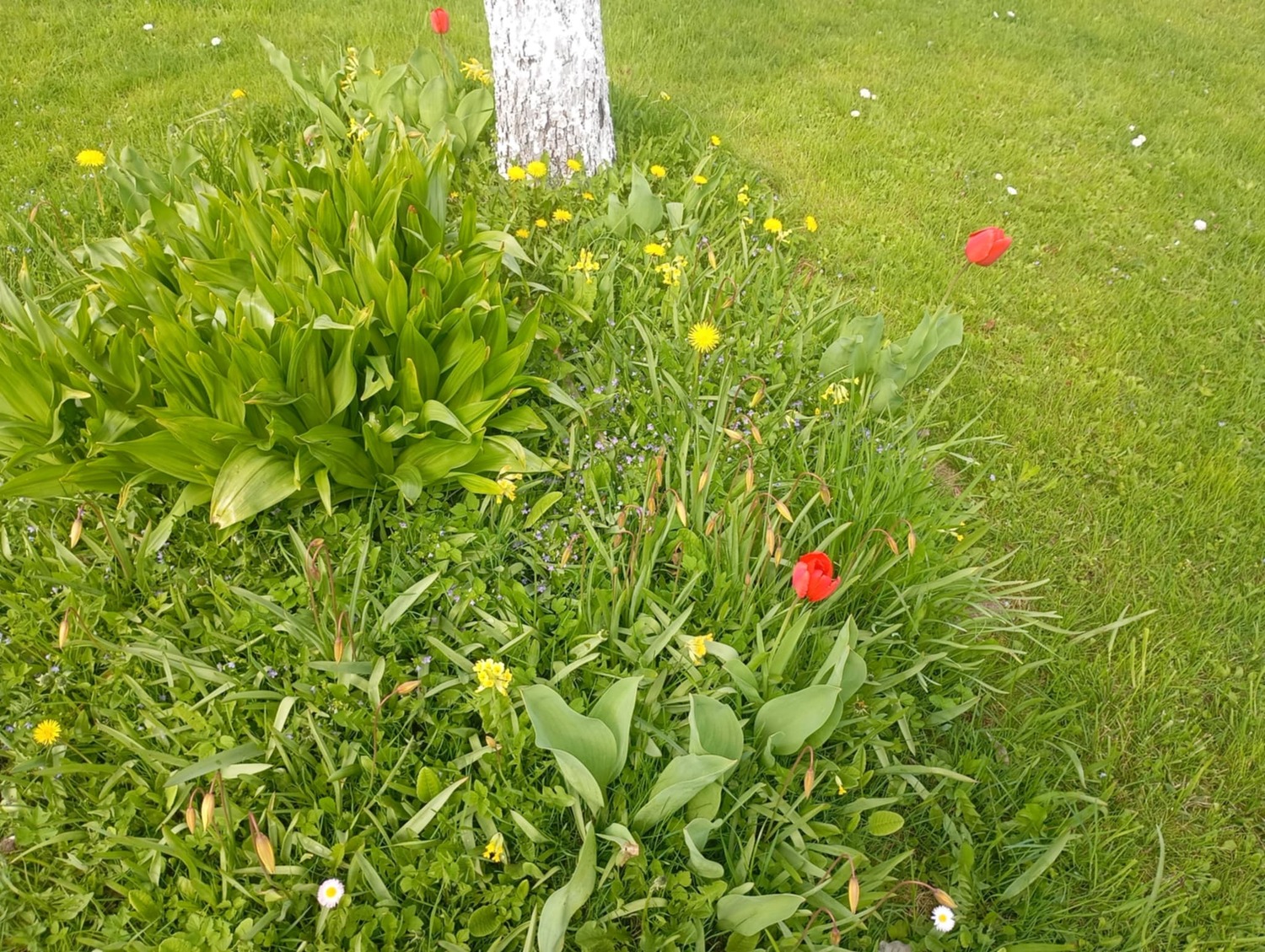
It is recommended to soak the bulbs in a disinfecting fungicide solution for 30 minutes.
Plant carefully. Do not press the bulbs into the soil, as this can damage them and increase the risk of disease. After planting, level the soil surface to prevent water from pooling, which could cause the bulbs to rot. It is recommended to mulch with peat, compost, or dry leaves. Tulips are frost-hardy, but the bulb yield and flower quality will improve if the planting beds are covered during winter.
Tulip Growing
Tulips love moisture. If the spring is dry, it is essential to water them with warm water, but be careful not to get the water on the leaves.
To grow large flowers and bulbs, tulips should be fertilised. The first application should be right after germination (30 g nitrogen, 20 g potassium, and 30 g phosphorus fertilisers per bucket of water). The second application should be before flowering (20 g nitrogen, 20 g potassium, and 30 g phosphorus fertilisers per bucket of water), and the third application should be after flowering (30 g phosphorus and 20 g potassium fertilisers). The optimal fertiliser ratio for tulips is: 1 part nitrogen, 1.5 parts phosphorus, and 3 parts potassium.
After flowering, the flower head should be snapped off to prevent the plant from using energy to produce seeds. When cutting the tulip, leave 2-3 lower leaves, which provide the bulb with essential nutrients.
Tulip Bulb Digging and Storage
Tulip bulbs are typically dug up every year, although some varieties can be left for two years. By digging them up annually, the bulbs grow larger, and unhealthy bulbs can be removed, ensuring better growth for the next season. It is best to dig up tulip bulbs slightly before the leaves have completely withered and the bulb's skin starts to turn red. This usually happens around July. If you delay the digging process, the bulbs become more susceptible to diseases.
After digging up the bulbs, place them in boxes with a mesh bottom, arranging them in no more than two layers. Do not dry the bulbs in direct sunlight. The bulbs should be dried at a temperature of 20-25°C (68-77°F), with humidity levels around 70%. The room should be well-ventilated to ensure proper drying.
After drying for 2-4 weeks, remove the old skins and roots. Try to minimise damage to the protective outer layer, as this can lead to fungal diseases and cause the bulb to deteriorate more quickly, losing its nutrients.
Tulip bulbs are stored in a dark room with a constant temperature of 18-20°C until planting in the open ground.
Tulip Diseases and Pests
One of the most common and oldest tulip diseases is petal blight. When the first tulips appeared in Europe, it was believed that the variegated flowers were a characteristic of the variety. On the affected leaves and flowers, lighter streaks appear. Infected tulips are weaker, smaller, and their bulbs are more susceptible to rot. Since there are no drugs that can eliminate the virus causing the disease without harming the plant, drastic measures must be taken. Infected tulips should be discarded and burned. The soil where the infected tulips grew should be dug up and moved elsewhere. Tulips can also be infected by cutting flowers, so it is recommended to disinfect the knife in a potassium permanganate solution after each cut. It is best to break off the flowers.
Fungal tulip diseases are treated with fungicidal solutions (20 g/10 l of water). As a preventive measure, it is recommended to water the tulips with this solution after prolonged rainfall, when the soil is damp.
